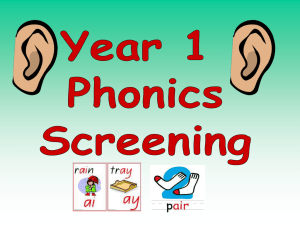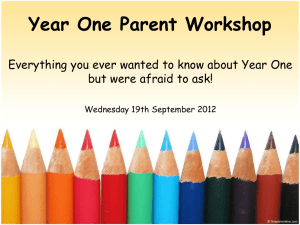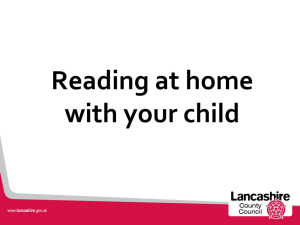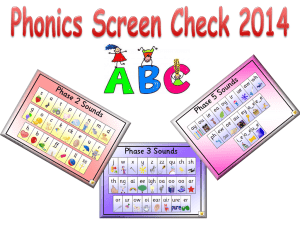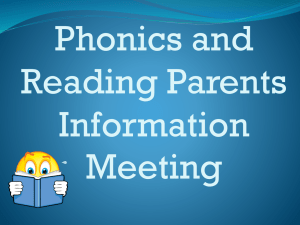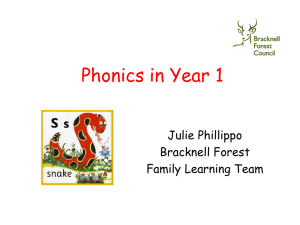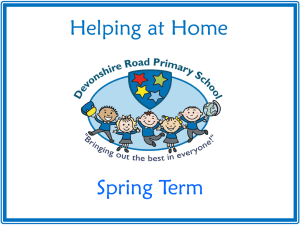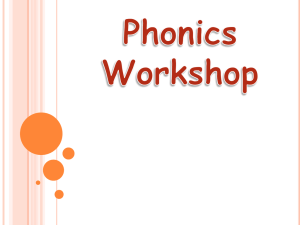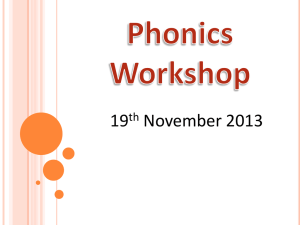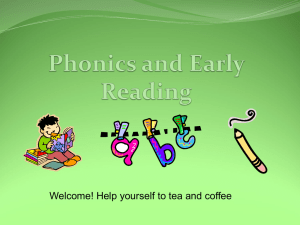File - Yellow Class Website
advertisement
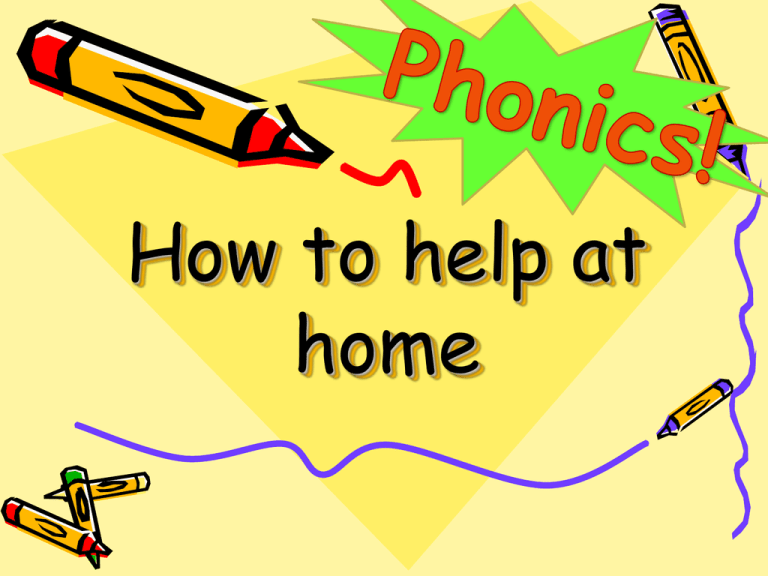
How to help at home What is Phonics? • Words are made up from small units of sound called phonemes. • Phonics teaches children to be able to listen carefully and identify the phonemes that make up each word. • This helps children to learn to read words and to spell words. Phonics= breaking words down into sounds Learning Phonics • Phoneme = sound • Grapheme = how the sound is written. i.e.- the letter p = p • We practise the sounds on their own and in whole words. • We use sound buttons to help children to identify sounds in written words. A dot for one letter that makes one sound, and a line for 2 or more letters that make one sound. i.e.- feet • •If you get stuck-Think about a simple word i.e. dogSay is slowly- how is each letter pronounced? Initial sounds a b c d e f g h i j k l m n o p q r s t u v w x y z The children will be familiar with the jolly phonics actions. Simple example words Once children are good with single phonemes… • DIGRAPHS – 2 letters that make 1 sound ll ss zz oa ai • TRIGRAPHS – 3 letters that make 1 sound igh dge +You can practise these with your child using your orange word book. Digraphs/Trigraphs ff ll ss zz wh qu ar ck sh ch th ph ng ow* ee oi oo* or ai ur au* aw ay ea* ew ie* ue oa oy igh air ir er ou* ear dge Split Digraph • • • • • a-e e-e i-e o-e u-e make / sale these/theme time/like stone/pole rule/huge Grapheme phoneme correspondences • This simply means that they are taught all the sounds in the English language and ways of writing them down. • These sounds are taught in a particular order. The first sounds to be taught are: s, a, t, p. Phonics is taught in phases from 1 to 5. Children progress at different rates, however in year one they should be working on phase 5 and in year two there is a focus on grammar and spelling. Blending • Children are taught to be able to blend. This is when children say the sounds that make up a word and are able to merge the sounds together until they can hear what the word is. This skill is vital in learning to read. c-a-t = cat Segmenting • Children are also taught to segment. This is the opposite of blending. Children are able to say a word and then break it up into the phonemes that make it up. This skill is vital in being able to spell words. cat= c-a-t TRICKY WORDS• Words that are not easy to decode need to be learnt separately• e.g. was, the, I, want. • Some are ‘tricky’ to start with but will become easier to decode once we have learned the harder phonemes • e.g. out, there, • Most important thing – From a very early age… • Talking and Listening. • Reading with and to your child • Playing listening games • Singing songs and rhymes • Simple movement games All these things will help to build up connections in the brain, and enjoyment of language and confidence to try things out. www.phonicsplay.co.uk Useful websites • www.phonicsplay.co.uk • www.bbc.co.uk/schools/parents • www.jollylearning.co.uk/ • www.focusonphonics.co.uk/ • www.syntheticphonics.com • http://www.nessy.com/ What is the Year 1 Phonics Screening check? • It is a government test designed to assess whether children have learnt phonic decoding to an appropriate standard. • All Year 1 pupils will take the phonics screening in June. • Any children absent will still need to take it upon their return to school. Is it compulsory? • Yes • It is a statutory requirement for all schools to carry out the screening check • Any child that does not reach the specified pass mark will need to re-take the screening check in Year 2. What will the check look like? • It will consist of 20 real words and 20 pseudo words • It will be assessing children up to Phase 5 in Letters and Sounds • The children will do this on a one-to-one basis with a teacher • It should take about 10 minutes but each child is different so may need longer Results • The pass mark has not been set yet, but in previous years it has been 32 out of 4080% • Parents will be informed of their child’s results at the end of the term. Further Information about the Phonics Screening Check • This can be found on the Department for Education Website • http://www.education.gov.uk • Sample materials can be downloaded from this website and on you tube there are example videos of how the • tests are undertaken.
